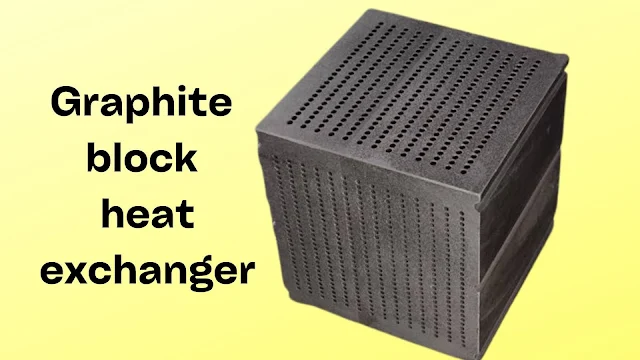It consists of a series of rectangular, parallel plates held firmly together between substantial head frames. The plate has corner ports and is sealed and spaced by rubber gaskets around the ports and along the plate edges.
The plates have corrugated faces. These plates serve as heat transfer surfaces and are frequently of stainless steel.
{tocify} $title={Table of Contents}
Corrugated plates provide a high degree of turbulence even at low flow rates. In general, the gap between plates is 1.3 to 1.5 mm. It is provided with inlet and outlet nozzles for fluids at ends.
In a plate type of heat exchanger, a hot fluid passes between alternative pairs of plates, transferring heat to cold fluid in the adjacent space. The plates can be readily separated for cleaning and the heat transfer area can be increased by simply adding more plates. plate type heat exchanger diagram
Advantages
It is very compact and requires very small floor space, low-pressure drop, absence of inter leakage of fluids, ease in dismantling for inspection and cleaning, high heat transfer coefficients, and large heat transfer areas in a small volume.
Plate heat exchangers are competitive with shell and tube exchangers where corrosion-resistant materials are required. As a larger surface is available for a given duty, an operation with a small temperature difference is possible. Thus for heat-sensitive materials and where close temperature control is required, these units are used. These are successfully used in dairy and brewery industries where close control of temperature is an available feature.
Plate exchangers are relatively effective with viscous fluids with viscosities up to about 30kg/m.s (300 poise). These can be employed up to a temperature of 423K (150°C) and pressure of 900 kN/m2. These units are easily dismantled for the inspection of plates. The weakness of these units is the necessity of long gaskets. Shows a typical plate-type unit.
Graphite block heat exchanger
Graphite heat exchangers are well suited for handling corrosion fluids. Graphite being soft these exchangers are made in cubic or cylindrical blocks.
In cubic exchangers, parallel holes are drilled in a solid cube such that parallel holes of a particular row are at right angles to the holes of the row above and below. Headers bolted to the opposite sides of the vertical faces of the cube provide the flow of process fluid through the block. The headers located on the remaining vertical faces direct the service fluid through the exchanger in a cross-flow.
Take these Notes is, Orginal Sources: Unit Operations-II, KA Gavhane


